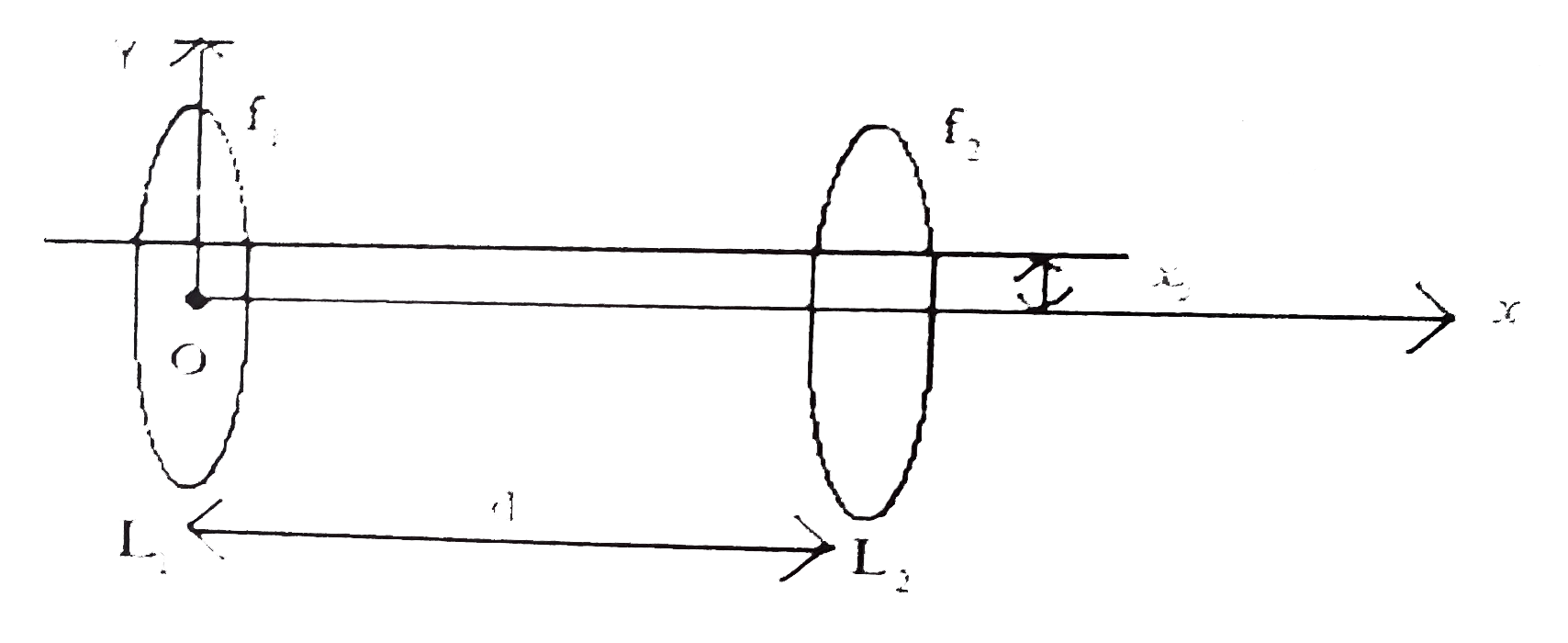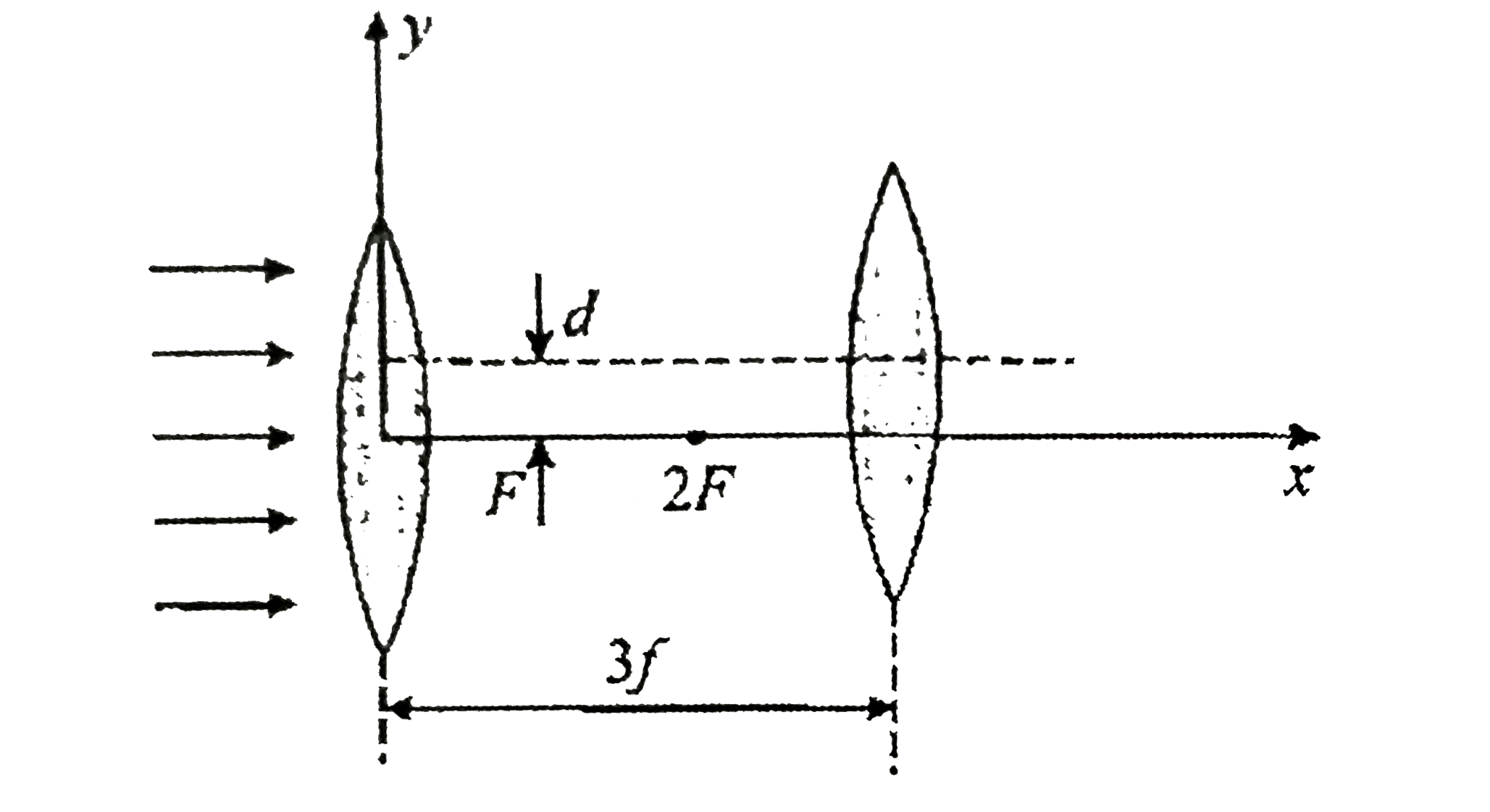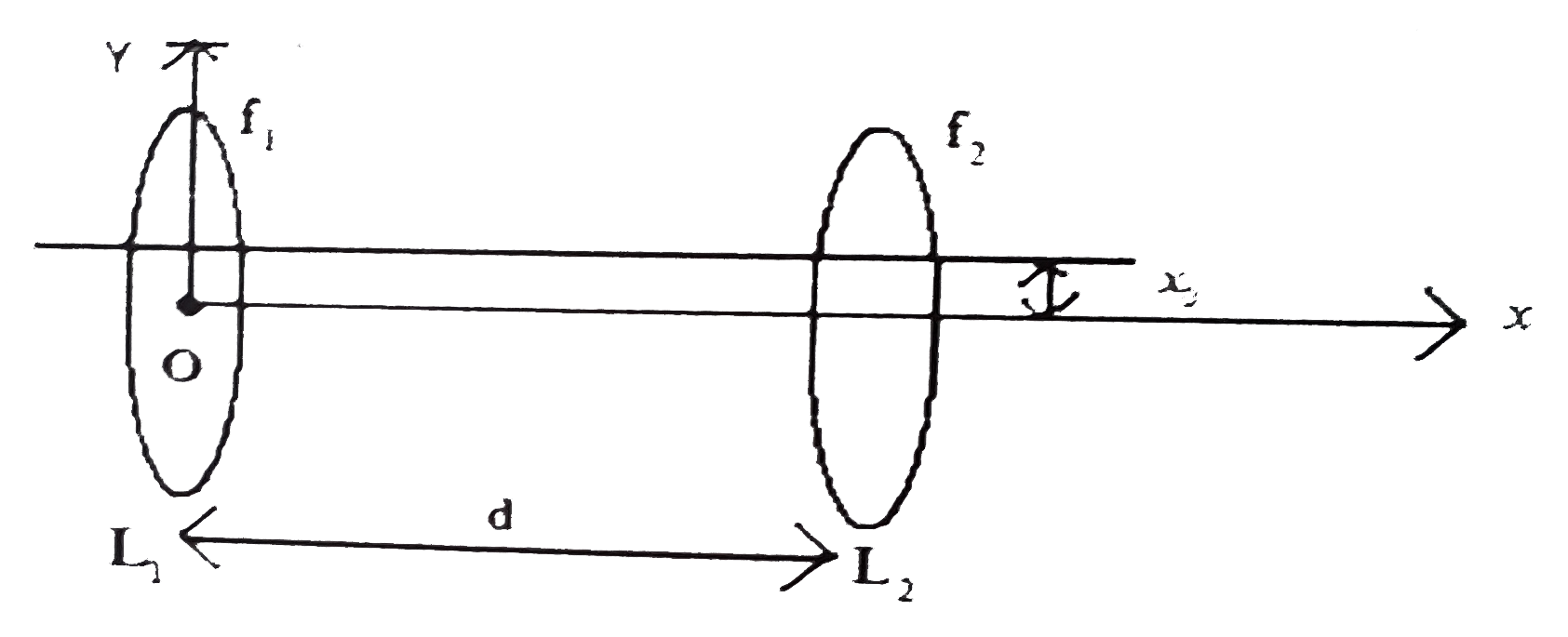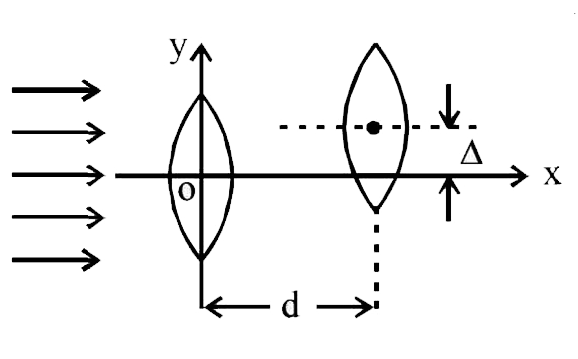TTwo thin convex lenses of focal lengthf1andf2are separated by a horizontal distance'd'where(d<f1andd<f2) and their optical centers are displaced vertically byx0 .Taking the origin at the centre of lens L1consider the following cases when a parallel beam of paraxial rays are coming form left.

Y coordinate of the final image is given by:
x0[f1−d(f1+f2−d)]
x0
x0(f1+d)f1+f2
x0(f1+d)(f1+f2−d)
The correct Answer is:A
Step by step video, text & image solution for TTwo thin convex lenses of focal lengthf_(1)andf_(2)are separated by a horizontal distance'd'where(dltf_(1) "and" dltf_(2)) and their optical centers are displaced vertically byx_(0) .Taking the origin at the centre of lens L_(1)consider the following cases when a parallel beam of paraxial rays are coming form left. Y coordinate of the final image is given by: by Physics experts to help you in doubts & scoring excellent marks in Class 11 exams.
Updated on:21/07/2023Similar Questions
In the figure- it is shown,the focal length f of the two thin convex lenses is the same. They are separated by a horizontal distance 3f and their optical axes are displaced by a vertical separation 'd'(d<<f) as shown. Taking the origin of coordinates O at the centre of the first lens , find the x and y coordinates of the point where aparallel beam of rays coming from the left finally gets focussed ?
((5f, 2d)]

View Solutionthe focal length of the two thin convex lenses is the same=fThey are separated by a horizontal distance3fand their optical axes are displaced by a vertical separation'd'(d<<f) .Taking the origin of coordinatesOat the centre of the first,lens ,find the xand y coordiates of the point where a parallel beamof rays coming from the left finally get focused?

View Solution
Knowledge Check
Two thin convex lenses of focal lengthf1andf2are separated by a horizontal distance'd'where(d<f1andd<f2) and their optical centers are displaced vertically byx0 .Taking the origin at the centre of lens L1consider the following cases when a parallel beam of paraxial rays are coming form left.

for the lens1 L2,object distance isAf2−f1Bf2+dCf1+dD(f1−d)Two thin convex lenses of focal lengths f1 and f2 are separated by a horizontal distance d (whered<f1,d<f2) and their centres are displaced by a vertical separation △ as shown in the fig.
Taking the origin of coordinates O, at the centre of the first lens the x and y coordinates of the focal point of this lens system, for a parallel beam of rays coming form the left, are given by:
 Ax=f1f2f1+(f2),y=△Bx=f1(f2+d)f1+f2−d,y=△f1+f2−dCx=f1f2+d(f1−d)f1+f2−d,y=△(f1−d)f1+f2−dDx=f1f2+d(f1−d)f1+f2−d,y=0
Ax=f1f2f1+(f2),y=△Bx=f1(f2+d)f1+f2−d,y=△f1+f2−dCx=f1f2+d(f1−d)f1+f2−d,y=△(f1−d)f1+f2−dDx=f1f2+d(f1−d)f1+f2−d,y=0Two convex lenses of focal lengths f1andf2 are separated co-axially by a distance d. The power of the combination will be one if
Ad=(f1+f2)−f1f2Bd=(f1−f2)+f1f2Cd=√f1f2..f1+f2Dd=(f1−f22)
Two convex lenses of focal lengths f1andf2 are placed coaxially, a distance d apart. If the axis of one of the lenses is lifted parallel to itself by Δ, find the distance by which the focal point is shifted and the distance of the focal point from the first lens.
View SolutionWhen an object is at a distance u1 and u2 from the optical centre of a lens, a real and virtual image are formed respectively, with the same magnification.The focal length of lens is:
View SolutionTwo thin convex lenses of focal lengths f1 and f2 are arranged coaxially with ‘d’ as the reparation between them. The equivalent lens of the combination with focal length ‘F’ to be replaced for the combination is to be placed
View SolutionTwo converging lenses of focal lengths f1=10cm and f2=20cm are placed at some separation. A parallel beam of light is incident on first lens. Then,
View SolutionTwo convex lenses of focal lengths f1andf2 form images with magnification m1andm2, when used individually for an object kept at the same distance from the lenses. Then f1/f2 is
View Solution
